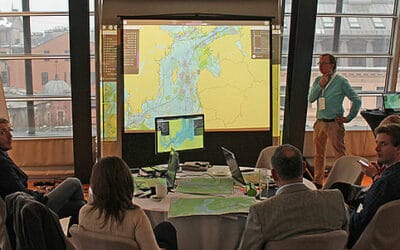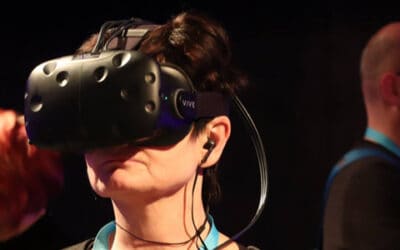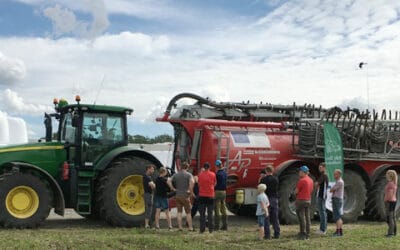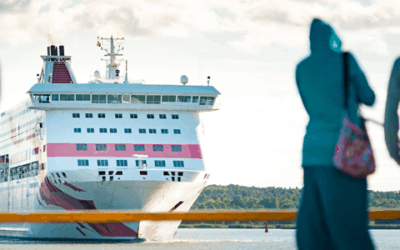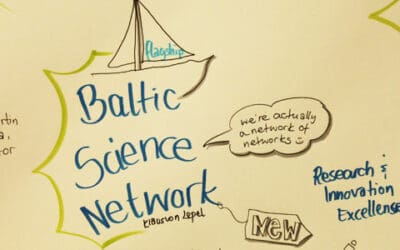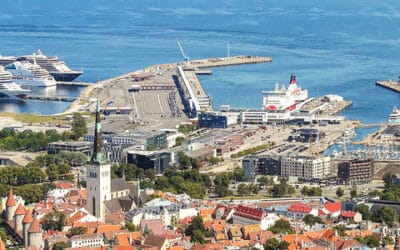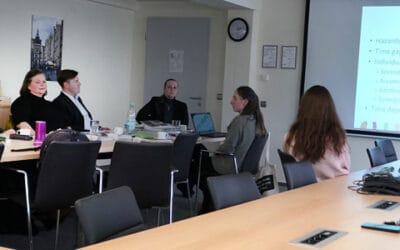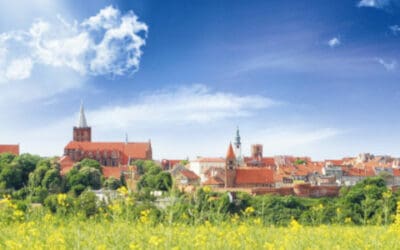Next-generation large windmills, solar power plants and electric cars can become more reliable and efficient thanks to advanced power electronics. These new technologies are in fact among the key drivers for reducing energy consumption and CO2 emissions. The Interreg Baltic Sea Region project Green PE explored the new terrain for using green advanced power electronics together with academia, technology transfer organisations and industry around the Baltic Sea.
Interreg Baltic Sea Region
News
Coherent planning of shipping and offshore energy across borders with Baltic LINes
The Baltic Sea experiences an increasing demand for coherent spatial planning in order to bring shipping routes and offshore renewable energy infrastructure together. Project partners from nine countries worked across borders to tackle the challenge of scarce space available and competing economic interests of the different sectors active in and around the Baltic Sea in the Interreg project Baltic LINes.
Augmented reality for real-life benefits
Finding a Pokemon on your city’s main square or playing tennis in your living room with a handheld pointer – these examples of augmented reality have reached millions of people. Screen industries which develop, produce and sell such games have a huge potential to cross-innovate traditional sectors. But virtual and augmented reality are rarely used outside gaming. Read about how Interreg catalysed innovation by connecting screen industries with education, health and tourism.
A chemical trick to make the Baltic Sea waters clearer
There is something that house cleaning products, brie cheese and a pile of animal manure have in common. That is an pungent and unpleasant smell. A reason behind the bad odour is the chemical compound ammonia. The smell ammonia spreads is as bad as it’s harmful for the environment. Therefore, partners within the Baltic Slurry Acidification project joined forces to reduce the ammonia emitted from farms.
“I want to make ferries visible on Google maps”
Ferries are moving people all across the Baltic Sea region, be it from Kiel to Helsinki or just across Rostock’s river Warnow. But often, it’s hard to find them as a travel alternative to airplanes or local busses. The Real Time Ferries project (RTF) works to change this situation. Johan Östling from the Swedish RTF partner RISE Viktoria explains how the RTF idea will overcome the project duration and why placing a hackathon on board a ferry can be a great move.
Baltic Science Network Shapes Common Perceptions and Solutions
The Baltic Science Network shapes not only policies, but, most importantly, it develops perceptions about the value and importance of cooperation in higher education, research and science domains. Baltic Science Network started as the Interreg Baltic Sea Region project BSN in March 2016 and will continue as BSN_powerhouse until January 2021.
Greener cruising across the Baltic Sea
Cruise shipping in the Baltic Sea region has grown enormously. In 2018, the number of cruise guests visiting destinations at the Baltic Sea was almost five times higher than in 2000 and the boom is expected to last at least. More passengers means more jobs and growth for the port locations and their hinterland.
Screening Baltic Sea for pharmaceuticals
Although pharmaceuticals are useful and often lifesaving for people, they may contaminate the Baltic water and marine life, for example if inappropriately disposed. CWPharma, an Interreg Baltic Sea Region project, picks up this pressing challenge and screens active pharmaceutical ingredients to analyse the sources, emissions and environmental concentrations of pharmaceuticals in the Baltic Sea region.
NonHaz office!?
The NonHazCity project has compiled knowledge about hazardous substances in everyday life and about how to reduce their consumption. Campaigns were run among consumers, companies and municipal administrations in nine cities around the Baltic Sea: Pärnu, Turku, Gdansk, Riga, Hamburg, Västerås, Stockholm, Silale and Kaunas. One site visit even led the project to the office of the Managing Authority/Joint Secretariat of Interreg Baltic Sea Region.
European Route of Brick Gothic: Attractive heritage of regions and cities
Bricks are everywhere in the Baltic Sea region. They are historical witnesses of the middle ages in northern European coastal countries. This authenticity and the common architectural language associated with medieval brick buildings are the focus of the association...




